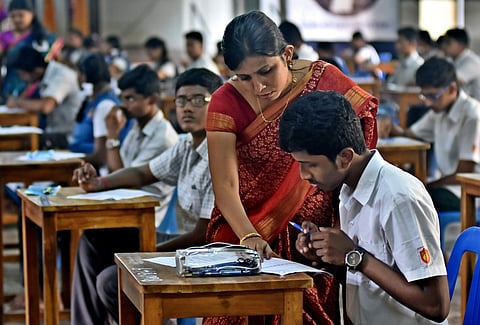

During an assessment of the Class X and XII board exam results, the Ministry of Education (MoE) identified certain challenges in the area. Large differences in the performance of students from various boards, significant variations in pass percentages and no level playing field for students in terms of standards were among the highlighted issues.
The MoE study pointed out that the top five boards (Uttar Pradesh, CBSE, Maharashtra, Bihar and West Bengal) cover about 50 per cent of the students in India, with the rest 50 per cent being enrolled in 55 other boards across the country. It also found that different syllabi followed by the boards have created barriers for national-level entrance tests, as per a report by PTI.
It noted that while Meghalaya has a pass percentage of 57 per cent, Kerala has a pass percentage of 99.85 per cent. According to School Education Secretary, Sanjay Kumar, the difference between pass percentages of various states has led the Education Ministry to now look at standardising the assessment pattern for all the school boards.
Currently, there are three central boards in India: the Central Board of Secondary Education (CBSE), the Council for the Indian School Certificate Examinations (CISCE) and the National Institute of Open Schooling (NIOS). Apart from these, various states have their own boards, taking the total number of school boards to 60.
The study analysed the Class X and XII results for state boards of Andhra Pradesh, Assam, Karnataka, Kerala, Manipur, Odisha, West Bengal and Telangana to understand the variation in results. Convergence of the secondary and higher secondary boards into a single board in a state can help students, the study suggested.
It also recommended that state boards may converge the Science syllabus with the central boards so that students have a level playing field for common exams like JEE and NEET. The other reason behind this standardisation attempt is to contain the dropouts at the level of Class X.
"Thirty-five lakh students of Class X are not reaching Class 11, 27.5 lakh students are failing and 7.5 lakh students are not appearing for the exam," the report said. It noted that 11 states contribute to 85 per cent of school dropouts. These states are Uttar Pradesh, Bihar, Madhya Pradesh, Gujarat, Tamil Nadu, Rajasthan, Karnataka, Assam, West Bengal, Haryana and Chhattisgarh.
The availability of fewer teachers and trained teachers per school was mentioned as a possible cause for higher failure rates in state boards. This contributes to a low Gross Enrolment Ratio (GER) and also affects India's overall rank in global indices, the report said.
"Mapping of failing students (around 46 lakh) of regular state boards with open boards and exchange of information can help in tracking and retaining students in the education system for a longer period. Presently, only 10 lakh students are registering through open schools. Similarly, (around 12 lakh) students registered but not appearing can be mapped with the skill development department for tracking and training them,” the study noted, as per PTI.
